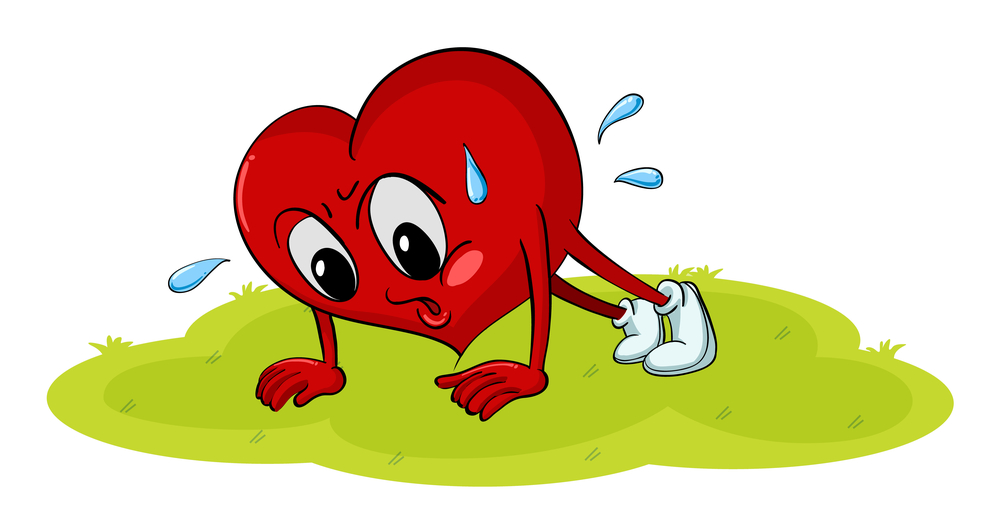
At 45 years Aditya was living a perfect life. Good job, handsome salary package, loving family, parties with friends, about everything good life had to offer. One day he woke up at 4.30 a.m. and complained of a discomfort in the chest, it may be “gas” he surmised. His wife said they can go to the doctor after breakfast, she suggested he drink some water and go to sleep. He went to sleep never to wake up – this is a real-life incident. Coronary heart disease is the leading cause of death in India. Added to this is a significant burden of congenital heart diseases, rheumatic heart disease, degenerative heart disease and arrhythmia related cardiac problems. Heart disease is rising rapidly in India with westernisation of our diet/reduced physical activity and a genetic predisposition to develop blockages in the blood vessels. We have a high incidence of diabetes, hypertension, and central obesity which contributes to coronary artery disease at a younger age.
What can we do?
AWARENESS
As doctors, the biggest problem that we face is one of suspicion and denial. People are unable to accept that they themselves or a dear one can possibly develop a heart attack. “He was fine till 2 hours ago,” is the usual refrain. Unfortunately, most heart attacks happen suddenly. “Time is Muscle” – the sooner you treat the better are the outcomes. The longer you wait, the more heart tissue dies. Going from one hospital to another in an emergency wastes precious time. One should go to the nearest facility which is equipped to handle these situations. In chronic conditions there is enough time and scope for multiple opinions and hospital visits.
PREVENTION
The old adage – prevention is better than cure, is very appropriate in this context. Ischaemic heart disease, or IHD, occurs due to plaque formation in the coronary arteries. It cannot be attributed to one single cause but is usually due to multiple risk factors. Some of them are modifiable and therefore more relevant. These are:
- Diabetes
- Smoking
- Hypertension
- High cholesterol
- Obesity
- Physical inactivity
- The non-modifiable risk factors are
- Age
- Sex
- Family-history
- Ethnicity (Indians are more prone than Caucasians/Chinese/Japanese)
DIABETES
Diabetics are 3-5 times more prone than non-diabetics to develop IHD. It is important that people with diabetes should have their cholesterol levels checked and treated appropriately. Good blood sugar control has also been associated with lesser cardiac events.
SMOKING
Smokers have a 3-5-fold higher risk of IHD. They develop blockages at a younger age and have a higher propensity to develop plaque rupture and acute heart attacks. Quitting is the single most important health intervention that can be made with least cost to the individual.
HYPERTENSION
All individuals should know their blood pressure and check it periodically. High blood pressure is a silent killer as it is mostly asymptomatic and inflicts damage gradually. All individuals should be treated appropriately if the blood pressure is high.
PHYSICAL INACTIVITY
With advance in technology and availability of gadgets for every need, physical inactivity has become rampant. Lack of physical activity causes diabetes, hypertension, high cholesterol, and increased risk of heart attacks. Moderate physical activity of 30- 45 minutes every day is recommended to maintain a healthy heart.
OBESITY
Obesity is a rising pandemic in Asian countries and all efforts should be taken from childhood to avoid obesity. Obese individuals have a much higher likelihood of hypertension, diabetes and heart disease. Non-alcoholic steatotic hepatitis, osteoarthritis and sleep apnoea are some of the other drawbacks of obesity. A diet rich in natural food, high in protein, micronutrients and less of fats and refined carbohydrates is essential along with regular physical activity to maintain an ideal body weight.
CHOLESTEROL
High cholesterol is a major cause of heart disease. Checking one’s cholesterol values at least once in 5 years and taking remedial action (lifestyle changes and/or medications) is a very important step in reducing heart disease.
When to seek medical attention?
Any of these symptoms should alert one to a possibility of heart disease:
CHEST PAIN –whenever one develops central chest pain which may radiate to either arm, throat or back., when the pain increases on exertion, the pain is associated with sweating, dizziness or loss of consciousness. Rarely heart attacks can present as abdominal pain and vomiting.
BREATHLESSNESS –breathlessness on exertion or on lying down may be a symptom of heart disease.
PALPITATIONS –exertional palpitations or sudden onset palpitations with dizziness or loss of consciousness may be a symptom of heart disease.
EASY FATIGABILITY can be a symptom of heart disease.
BLUISH EXTREMITIES, or loss of consciousness can be due to heart related problems. Take responsibility for your heart by making lifestyles changes and seek medical attention when you are troubled by any of these symptoms. With awareness and resolve, you can have a healthy heart.
A heart healthy diet, regular exercise, weight management, stress management, and quitting smoking are all lifestyle changes that reduce the risk of heart disease and stroke. Take care of your heart and it will take care of you.


